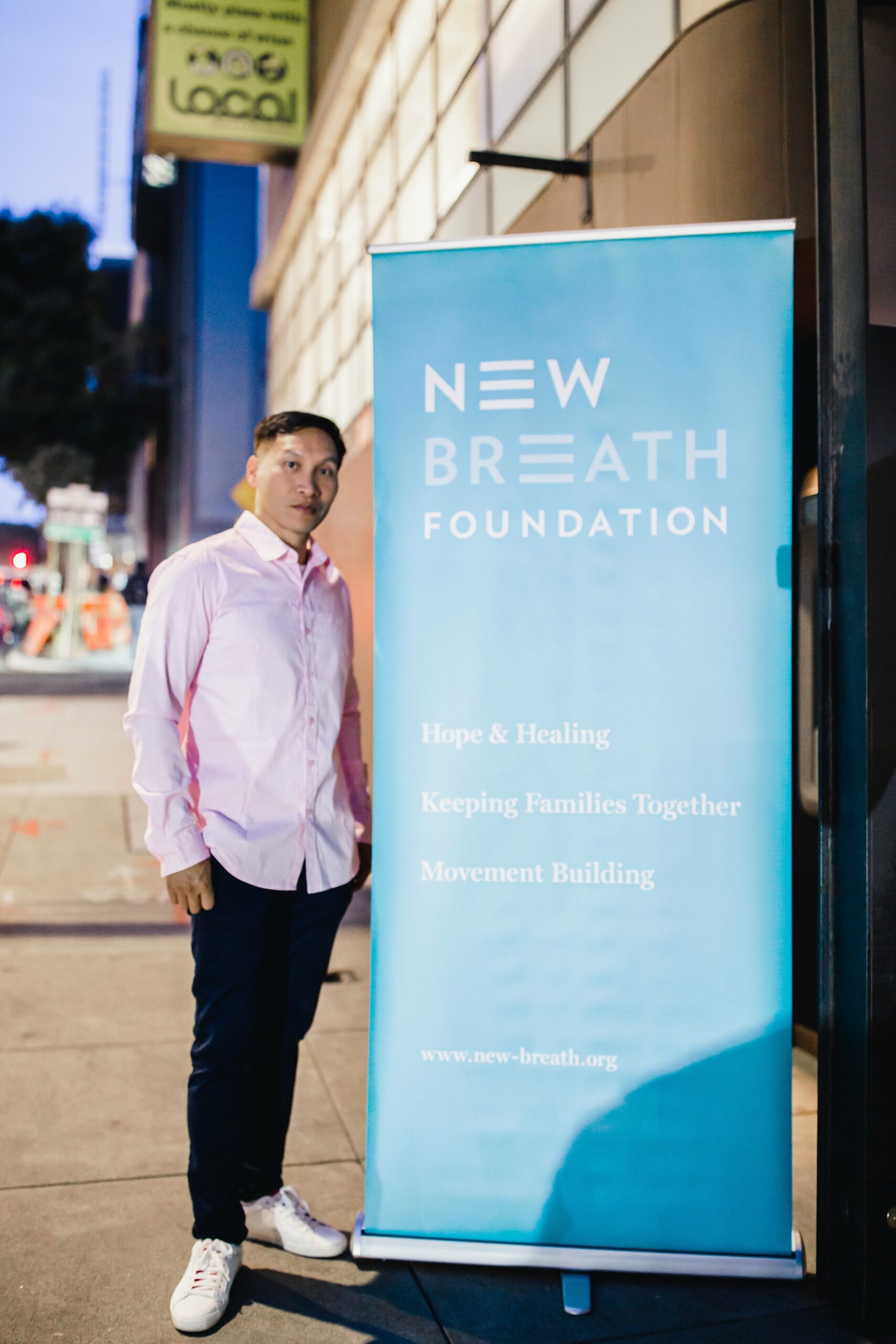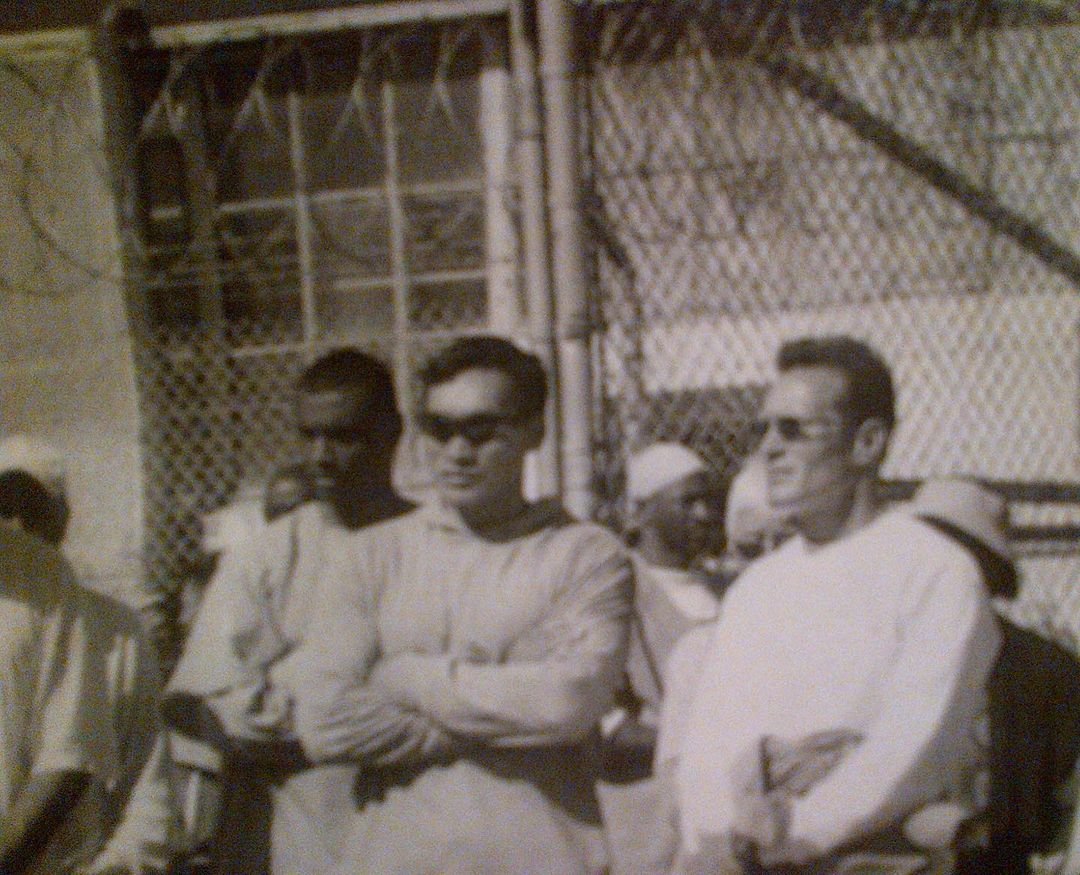When you were being handcuffed and going into solitary confinement, you didn’t even have a Top Ramen. And now you are distributing $4 mil.
A friend and former life-term prisoner spoke those words to me over the phone last month. It caused me to pause and reflect on my journey – from incarceration to building a philanthropic foundation.
I’m not supposed to be here.
I migrated to the US from China at the age of 12. We lived in a two-bedroom apartment with seven people. At age 16, I committed a crime, was charged as an adult and was sentenced to life at San Quentin State Prison. I spent 19 years of my life behind bars and then an additional 2 years in ICE detention. During that time, I educated myself, rehabilitated myself, and decided to dedicate my life to supporting immigrants and young people, empowering them so that they don’t fall into the same ways that I fell into. But I never thought in my wildest dreams that I would be an Executive Director or Founder of anything.
I’m not supposed to be here.
Once I got out in 2007, I immersed myself in the non-profit Community Youth Center of San Francisco (CYC), based in the Tenderloin. I was grateful that they gave me a job. We worked with high-need youth in various communities, providing them with a sense of belonging and equipping them to succeed in life.
Part of our work at CYC was getting funding from the city, county, and foundations to do the work of supporting young people and immigrant communities. There was an obvious shortage of resources and attention paid to Asian American, Native Hawaiian, and Pacific Islander (AANHPI) communities. At that time, there was little to no disaggregated data to justify our requests for funding, so we encountered many difficulties. The model minority myth created a barrier, and there was very little visibility or platform to receive culturally competent resources. During that time I learned that for every $100 awarded by foundations, only 20 cents is designated for AANHPI communities.
I’m not supposed to be here.
When I first exited the system over 16 years ago, there were less than a handful of AANHPIs on the national level, talking about the impact of mass deportation or incarceration in the AANHPI community. People just don’t associate the impact of incarceration and violence with AANHPI communities. At that time, I was advocating for funding specifically focused on supporting people impacted by incarceration, deportation, and violence. Not only did I rarely see this type of funding, I also didn’t see any formerly incarcerated or directly impacted Asian Americans who were leaders in philanthropic institutions.
I started noticing a trend in spaces where decisions were being made. When I got out of prison, while still working full-time as an outreach worker and case manager for CYC, people would often come to me – research students doing their theses, media, foundations, organizations, and schools – and ask me to share my story. I was being sought after for input, program strategy, different things. And I was always willing to share, to use my story to help young people, to help inform college curriculums to support directly impacted folks. Yet even as I was sought after for public speaking, motivational speaking, conflict resolution, etc., it was always other people dictating the programming itself, not me. I may have provided input, but in the end, other people were in charge of making the decisions. Oftentimes even with my input, programs wouldn’t necessarily center the directly impacted people, or wouldn’t consider directly impacted people as being part of the solution.
Philanthropy, as an institution, did not include people who were directly impacted. People just didn’t associate directly impacted folks as capable of being in those types of leadership positions and building something up from the ground to address the inequity in our community. Even when I first got hired at CYC, some individual funders told the Executive Director, “If you hire Eddy, we won’t financially support you.” Why? “Because Eddy did this harm 21 years ago. He’s no good, he’s dangerous. Why are you hiring him?”

Creating My Own Table
It was already tough to get funding and resources for AANHPI nonprofits. And in philanthropy, there was no model, no pathway, no seat at the table for people like me. Period. When I say “people like me,” I’m talking about somebody who committed harm, was able to take accountability, rehabilitate, transform, and then utilize this experience to want to do good for the community. But I wasn’t included at the table.
I decided to create my own seat and my own table. The pathway to creating New Breath Foundation came out of my own experience of building trust with the community and producing results – not despite, but because of my background.
Moving at the Speed of Trust
I am here because of the people who believed in me, invested in me, and advocated for me. When I was imprisoned, so many people showed up for me, fought for my release, and organized around my cause. Despite the harm I caused, and the harm I experienced by the school-to-prison-to-deportation pipeline, I was able to embrace new beginnings and even come to lead community transformation.
Once I was able to start the foundation in 2017, I moved at the speed of trust. Because of my background in prison, my experience working in the non-profit sector, and my ability to build and nurture relationships within various communities – from survivors to politicians – I was able to gain the credibility needed to create a space where I could address inequities within AANHPI communities.
It’s hard to believe what we have accomplished in just five years. As of 2022, NBF has funded 46 local organizations and 6 national organizations across 12 states. We have awarded a total of $3.8 million in grants, with the goal of awarding at least $1 million in 2023 through our We Got Us Fund. The impact and reach of our work have been instrumental in uplifting AANHPI communities impacted by incarceration, deportation, and violence – communities that society and philanthropy have historically overlooked. Our vision at NBF has always been that AANHPIs harmed by violence, incarceration, and deportation – like myself – have the power to embrace new beginnings and lead community transformation.
A Foundation Based on Relationships
Our approach at New Breath Foundation is not only a reflection of our values and our direct lived experience but also makes a greater impact on the communities we serve. Foundations are often very transactional and top-down; this space does not normally include people like me or listen to the voices of impacted communities. But we are creating a space where impacted folks like me can take power, where we center directly impacted folks, and create healing, new beginnings, and more capacity for people to heal and grow. We do this in three distinct ways:
- At New Breath Foundation, we don’t hoard money. We don’t have a large endowment. We raise money and give money away. We fundraise, cultivate resources, and then pass those resources on. We are trying to create access for people who don’t have access. We reject this scarcity mentality or spirit of competition that is so often prevalent in these spaces.
- We are proud of the relationships we have cultivated with our grantee partners. When we fund our grantees, we not only provide funds, but we support and nurture and grow, so we can have collective advocacy and focus on collective liberation. We do not ask grantees to do impact or expenditure reporting; rather, we do the reporting for them. This allows them to focus on the work, while we focus on supporting our grantees.
- Our Community Advisory Committee (CAC), which consists primarily of AANHPI formerly incarcerated leaders and survivors of violence, plays a key role in our grantmaking. The CAC process promotes leadership pathways for directly impacted AANHPI leaders and allows us to listen to the expertise and experience of marginalized AANHPI communities, movements, and regions.
The Road Ahead
We have since come a long way, as a society and as a philanthropic sector, since I first got out 16 years ago. On the State and Federal level, as well as through organizations like AAPIP and Stop AAPI Hate, collecting and publishing disaggregated data around AANHPI communities is increasingly recognized as crucial for accurately representing AANHPI communities and breaking the model minority myth. The concept of directly impacted people being part of the solution – this terminology appeared around 7 years ago with formerly incarcerated leaders like Glenn E. Martin who coined the phrase “Those closest to the problem are closest to the solution, but furthest from power and resources.” Now we see orgs like Asian Prisoner Support Committee (APSC) and API RISE or networks like the Formerly Incarcerated, Convicted People & Families Movement (FICPFM) that center and uphold formerly incarcerated leadership. And there is much more of an acceptance of participatory grantmaking – an approach that cedes decision-making power about grants to the very communities impacted by funding decisions.
And yet, there is a lot more work to be done. Foundations allocate less than 0.2% of their funds towards AANHPI communities – and within that 0.2%, much less goes towards issues of criminal, legal, and deportation systems. These numbers have not changed since 1992. Philanthropy needs to go much further than just “checking the box” in resourcing AANHPI communities. I am where I am today because of the support, community, and trust that I experienced from folks who believed that this work matters, and that my voice is needed to help break cycles of violence and oppression in our communities. Imagine how the world could be if more people like me, if marginalized communities and voices, had the type of support that I received.
NBF is like a small fish in the ocean of institutional philanthropy. We are that little and insignificant. However, within that, we are being fearless and we are making a difference – because we are building a school of anchovies. So this is how we build. We’re talking about hope and healing, keeping families together, and movement building. This is what we’re nurturing. Will you join us?
